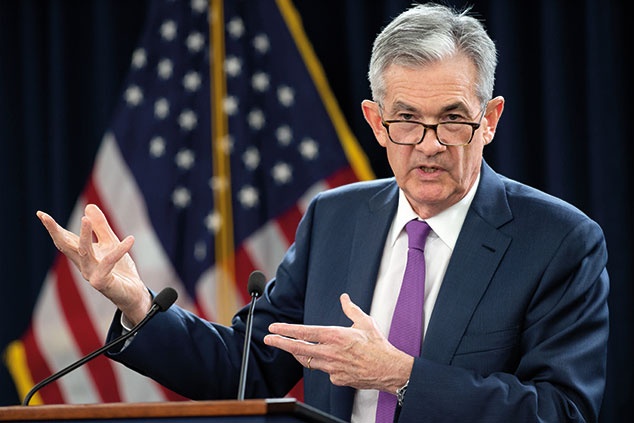
Too many people have been too pessimistic about markets, he says. But as it becomes increasingly obvious that the global economy is in perfectly reasonable shape, with the Chinese economy in particular still growing nicely, they (and their money) will be back, something that could push markets even higher than they are already.
It is worth remembering, however, that rising markets are not just about mildly healthier-looking economic indicators. They might not be about them at all: there is very little historical correlation between GDP growth, which is an almost meaningless number anyway (see Max King’s analysis for more on this), and stockmarket returns. But they are definitely about monetary policy.
At the end of last year the central bank chat was very much about quantitative tightening (QT) and rising interest rates. No more. In China the state-controlled banking system has been increasing the flow of credit; in the UK we know that rates won’t rise at least until Brexit is semi-sorted; and this week the Bank of Canada left its interest rate unchanged at 1.75% for the fourth time in a row and – crucially – dropped a reference to future rate rises that had been in every statement since late 2017. Finally, possibly most importantly, in February, the US Federal Reserve made it clear that it was soon to end QT.
The “Fed put”– the confidence-enhancing idea that the central bank will always intervene to protect equity markets – is back. If you believe that quantitative easing (QE) created our bull market in the first place and hence that QT corrected it late last year, the fact that the end of QT has prompted yet another new high from the S&P 500, despite the fact that valuations in the US are already bizarrely high, will come as no surprise. The path of least resistance, says Robin Wiggleworth in the Financial Times, appears to be up.
With that in mind a flick through the magazine this week will give you some interesting investment ideas. In our cover story, I look at the agricultural sector: it has been undisrupted for some decades but is about to see serious change. I’m becoming mildly obsessed with both agri-tech (see also page 19 for a view on how the market will save the planet; agri-tech is part of that) and with the way some farms are returning to what you might think of as very old-fashioned methods of land management with a view to restoring soil health and hopefully yields.
We’d love interesting insights on any of these matters sent to the address below. Meanwhile, David Stevenson looks at the possibility of a 7%-plus yield on a regional real estate investment trust and Richard Beddard analyses an interesting Aim-listed vehicle devices firm.
However, given that stockmarket history is pretty clear on the fact that value wins out in the end (and that on most rational measures there is precious little of it about today), bulls should remember that all melt-ups are fast followed by meltdowns. If you are buying into today’s fast rising markets, do so with care.